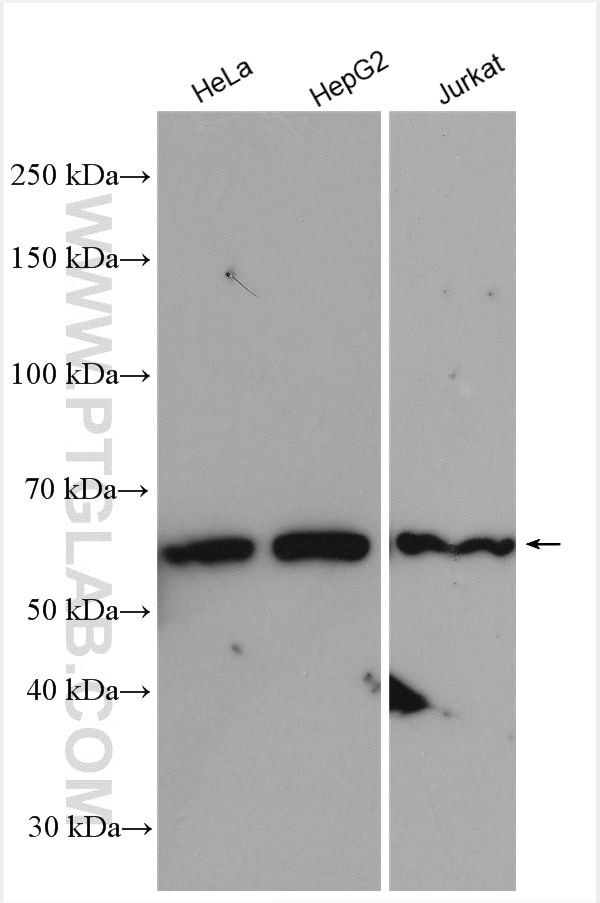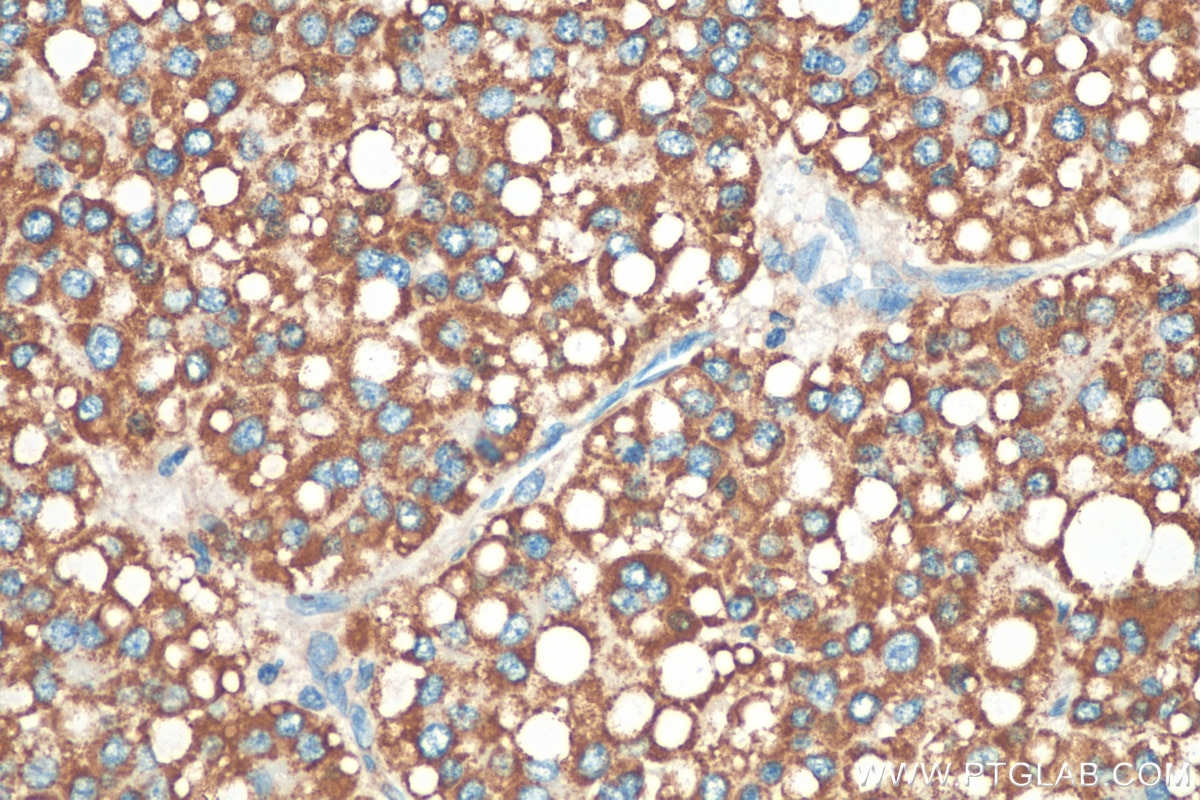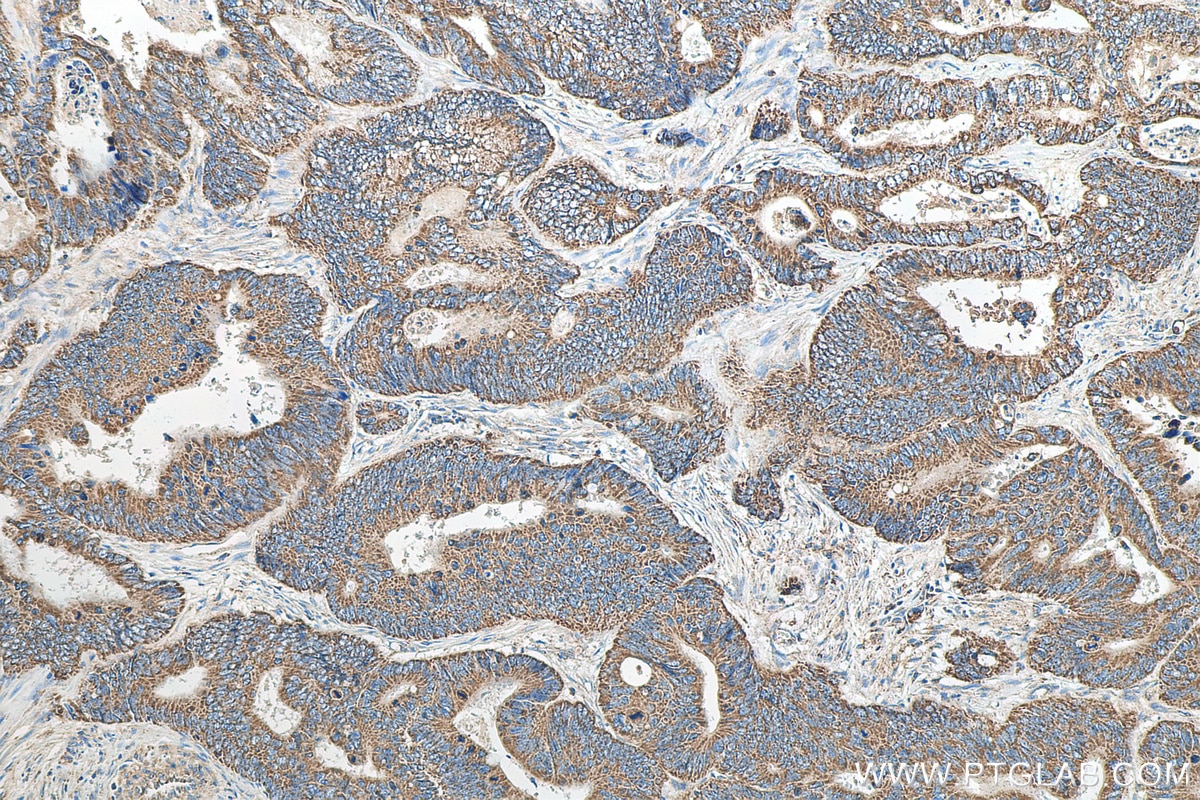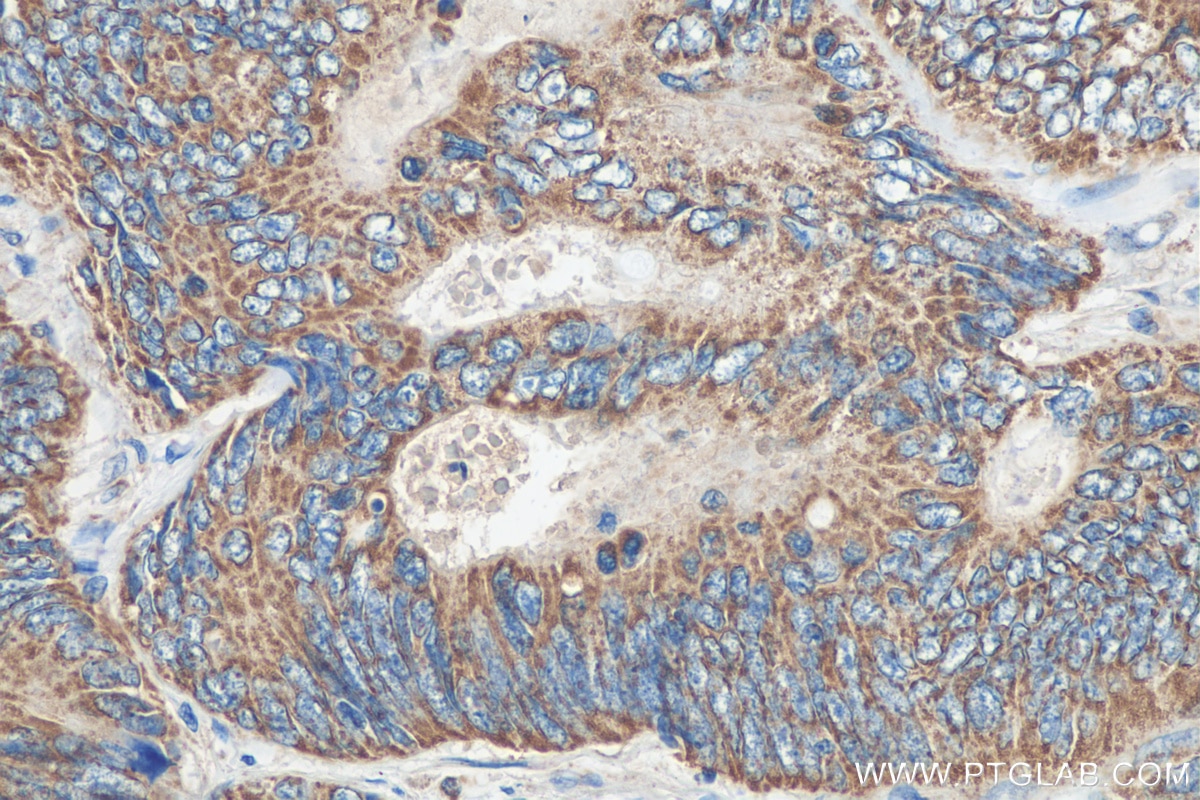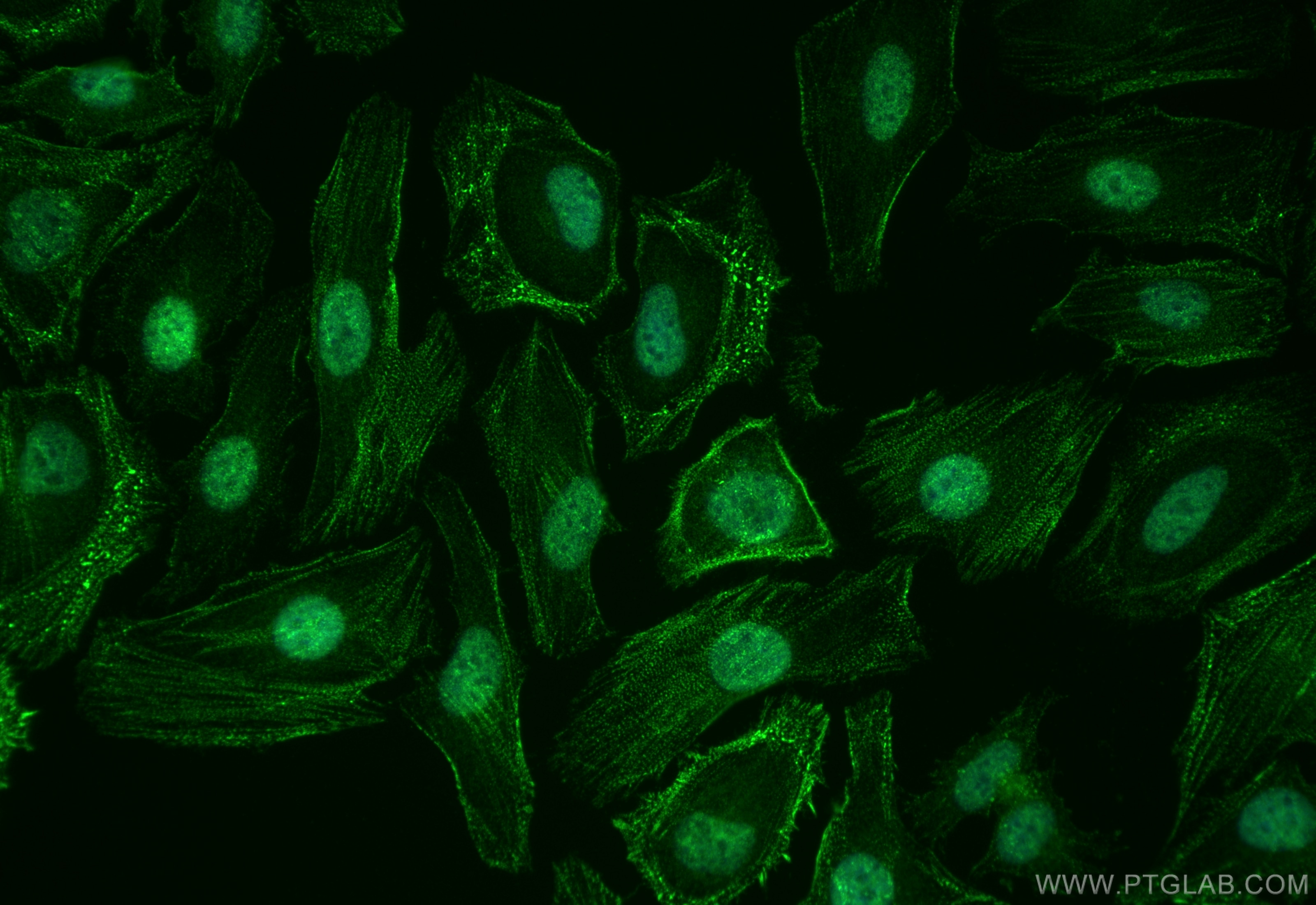- Phare
- Validé par KD/KO
Anticorps Polyclonal de lapin anti-ZBP1
ZBP1 Polyclonal Antibody for WB, IHC, IF/ICC, ELISA
Hôte / Isotype
Lapin / IgG
Réactivité testée
Humain et plus (1)
Applications
WB, IHC, IF/ICC, ELISA
Conjugaison
Non conjugué
N° de cat : 13285-1-AP
Synonymes
Galerie de données de validation
Applications testées
| Résultats positifs en WB | cellules HeLa, cellules HepG2, cellules Jurkat |
| Résultats positifs en IHC | tissu de cancer du foie humain, tissu de cancer du côlon humain il est suggéré de démasquer l'antigène avec un tampon de TE buffer pH 9.0; (*) À défaut, 'le démasquage de l'antigène peut être 'effectué avec un tampon citrate pH 6,0. |
| Résultats positifs en IF/ICC | cellules HeLa, |
Dilution recommandée
| Application | Dilution |
|---|---|
| Western Blot (WB) | WB : 1:1000-1:8000 |
| Immunohistochimie (IHC) | IHC : 1:50-1:500 |
| Immunofluorescence (IF)/ICC | IF/ICC : 1:400-1:1600 |
| It is recommended that this reagent should be titrated in each testing system to obtain optimal results. | |
| Sample-dependent, check data in validation data gallery | |
Applications publiées
| KD/KO | See 1 publications below |
| WB | See 21 publications below |
| IHC | See 5 publications below |
| IF | See 2 publications below |
Informations sur le produit
13285-1-AP cible ZBP1 dans les applications de WB, IHC, IF/ICC, ELISA et montre une réactivité avec des échantillons Humain
| Réactivité | Humain |
| Réactivité citée | rat, Humain |
| Hôte / Isotype | Lapin / IgG |
| Clonalité | Polyclonal |
| Type | Anticorps |
| Immunogène | ZBP1 Protéine recombinante Ag4119 |
| Nom complet | Z-DNA binding protein 1 |
| Masse moléculaire calculée | 46 kDa |
| Poids moléculaire observé | 42-68 kDa |
| Numéro d’acquisition GenBank | BC028218 |
| Symbole du gène | ZBP1 |
| Identification du gène (NCBI) | 81030 |
| Conjugaison | Non conjugué |
| Forme | Liquide |
| Méthode de purification | Purification par affinité contre l'antigène |
| Tampon de stockage | PBS with 0.02% sodium azide and 50% glycerol |
| Conditions de stockage | Stocker à -20°C. Stable pendant un an après l'expédition. L'aliquotage n'est pas nécessaire pour le stockage à -20oC Les 20ul contiennent 0,1% de BSA. |
Informations générales
ZBP1(Z-DNA-binding protein 1), also named as DAI or DLM-1, is a nucleic acid sensor with some isoforms. It has been reported that ZBP1 can sense the viral nucleic acids of viruses and induce the death of infected cells to prevent virus transmission. ZBP1 can be activated and causes necrocytosis without viral infection, which is associated with nuclear Z-form nucleic acids. ZBP1 can be detected 42 kDa, 55 kDa, 68 kDa isoforms (PMID: 37012234, PMID: 9121465).
Protocole
| Product Specific Protocols | |
|---|---|
| WB protocol for ZBP1 antibody 13285-1-AP | Download protocol |
| IHC protocol for ZBP1 antibody 13285-1-AP | Download protocol |
| IF protocol for ZBP1 antibody 13285-1-AP | Download protocol |
| Standard Protocols | |
|---|---|
| Click here to view our Standard Protocols |
Publications
| Species | Application | Title |
|---|---|---|
J Med Virol SARS-CoV-2 infection of polarized human airway epithelium induces necroptosis that causes airway epithelial barrier dysfunction | ||
Cell Death Dis Sensing of endogenous retroviruses-derived RNA by ZBP1 triggers PANoptosis in DNA damage and contributes to toxic side effects of chemotherapy | ||
Cell Death Dis ZBP1-mediated PANoptosis is a crucial lethal form in diverse keratinocyte death modalities in UVB-induced skin injury | ||
Biochim Biophys Acta Mol Basis Dis Ischemia-reperfusion injury induces ZBP1-dependent PANoptosis in endothelial cells | ||
J Agric Food Chem Integrative Gut Microbiota and Metabolomic Analyses Reveal the PANoptosis- and Ferroptosis-Related Mechanisms of Chrysoeriol in Inhibiting Melanoma | ||
Sci Rep Mitochondrial DNA damage and subsequent activation of Z-DNA binding protein 1 links oxidative stress to inflammation in epithelial cells.
|
Avis
The reviews below have been submitted by verified Proteintech customers who received an incentive for providing their feedback.
FH Charity (Verified Customer) (02-15-2024) | this will probably work at a lower concentration but I have not tried it yet.
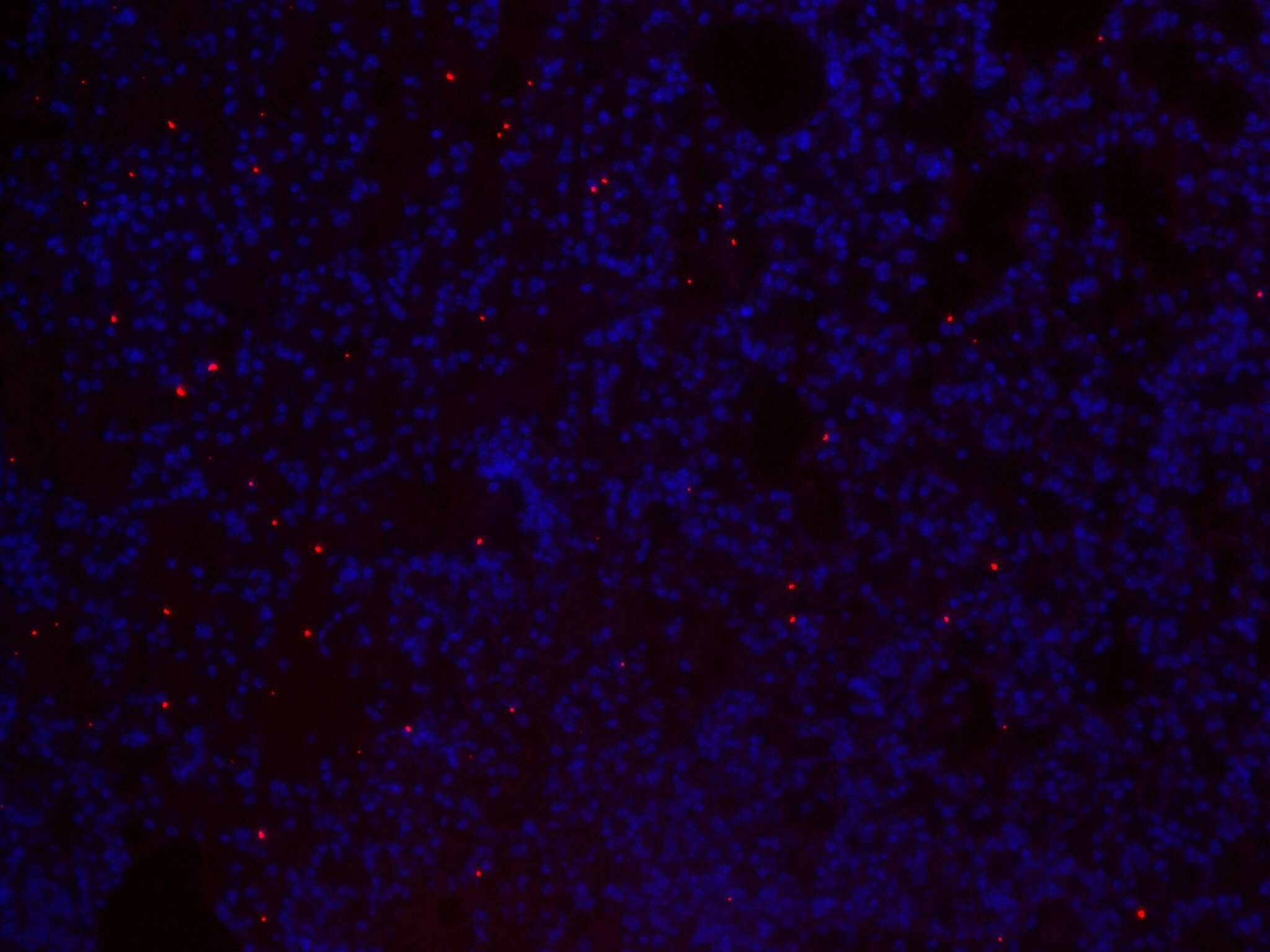 |
